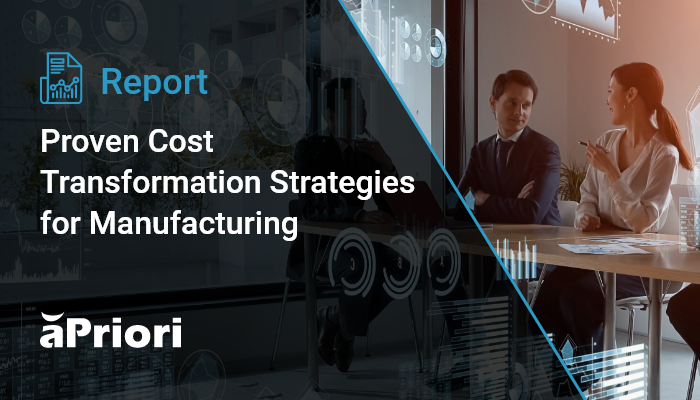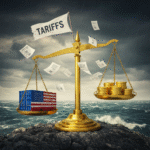Cash Flow Problems? Your Cost Professional Is Key To Creating A Cost-Conscious Culture
Key Takeaways:
- Manufacturers’ cash flow problems will persist without a change in the organization’s culture regardless of extenuating circumstances such as the supply chain and inflation
- Your cost professional can play a pivotal role in creating a cost-conscious culture, particularly throughout the product development process
The Full Article:
A June 2024 Forbes article titled, Manufacturing Industry Trends 2024, highlights economic concerns among manufacturing leaders. The article finds many are grappling with macroeconomic pressures including cash flow problems that impact the bottom line and company strategies.
And, if US election uncertainty weren’t enough, the article notes that 39% of survey respondents are concerned about labor costs and shortages and 47% of respondents are uneasy about recession risks. The Institute for Supply Management projects that although manufacturing staffing is expected to increase by 2% this year, wages and benefits costs also will likely rise by 5.2%.
When the economy and extenuating conditions create instability, how can manufacturers alleviate cash flow problems?
Cost Professionals: The Key to Creating a Cost-Conscious Culture
The cost professional (whether that’s a cost engineer, manufacturing engineer, or cost estimator) plays a significant role in product development. However, it doesn’t end with the obvious dollars and cents. In many organizations, the cost professional is an untapped powerhouse across the product development process.
Keep in mind that every function within the organization is responsible for cost. Implementing a team from each function to evaluate costs at each review and milestone will help ensure profitability while accelerating decision-making and time to market.
Here are five key areas where a cost professional can serve as a catalyst in not only helping reduce costs but also nurturing a more cost-conscious culture:
Cash Flow Problem #1: Form and function without cost consideration. Design engineers typically do not prioritize cost when conceptualizing and designing products, leading to costly late-stage redesigns and engineering change orders (ECOs). The design stage determines approximately 80% of a product’s cost. It is a pivotal point for reducing costs and improving cash flow management. What’s more, while start-ups can get to market quickly and then optimize costs, this isn’t true for more companies that have grown quickly and are more established. The latter must shift to a management mentality where maintaining and improving profit margins becomes the priority. However, today’s companies can have both profitability and speed to market right out of the gate.
Cost-Conscious Culture Strategy #1: Consider cost at design conception, utilizing a design-to-cost insights solution. The design stage determines approximately 80% of a product’s cost. It is a pivotal point for reducing costs and improving cash flow management. Working with a cost professional and a design-to-cost insights solution at product conception raises the cost-conscious bar before the product design can get kicked too far down the road. Make vs buy capabilities can determine the most cost-effective method (and/or supplier) to produce a product. For instance, should cost analysis helps manufacturers calculate more accurate pricing of purchased parts and components. Additionally, working with a cost professional at this stage also improves Value Analysis/Value Engineering (VAVE). VAVE reduces costs, optimizes product functionality, and improves overall performance without compromising quality.
Cash Flow Problem #2: Cost professional teams manually cost products via Excel. Approximately 70% of organizations today use spreadsheets to compare and track the actual costs of new product designs, leading to delays, human error, and higher costs.
Cost-Conscious Culture Strategy #2: Utilize your cost professional to advocate for an automated product cost management (PCM) solution. Companies can seamlessly integrate their ERP, CAD, and PLM with PCM software. The result is a detailed, highly accurate cost analysis to identify cash flow problems.
Cash Flow Problem #3: Supplier negotiations driven by emotions. Harvard Business Review found that emotions play a significant role in negotiations. Overriding emotions can be costly at the supplier negotiating table.
Cost-Conscious Culture Strategy #3: Cost professional and sourcing/procurement work together, gathering the right data before supplier negotiations. AI-powered sourcing insights like aPriori find the most cost-effective, efficient manufacturing locations and allow for supplier comparison across various regions. This accurate data can also be used for fact-based supplier negotiations that not only keep costs down but also improve supplier relations and create a more agile supply chain.
Cash Flow Problem #4: Antiquated quoting processes. A protracted, disjointed quoting process can lead to delays, resulting in lost bids and revenue.
Cost-Conscious Culture Strategy #4: Leverage your cost professional’s eye for detail when quoting. Look to your cost professional as an ally in your quoting process. Cost professionals can create detailed cost estimates, analyzing material, labor, and process costs as well as potential risks. They also can ensure that resources are allocated properly and that quotes align with budgets and profit goals, so quoting teams don’t underestimate costs and that quotes meet financial goals. It also enables quoting teams to arrive at more accurate, competitive quotes, increasing their wins.
Are Cash Flow Problems Impacting Your Ability To Innovate, Compete, And Profit?
Streamline your costing efforts, reduce expenses, and grow revenue. Our Cost Transformation Strategic Report shows you how.
More Resources:
Blog: Get four tips for cost reduction in product design and manufacturing (apriori.com)
Podcast: Cash Burn: Managing Cash in a Downturn Economy | Podcast (apriori.com)
Video: Driving Profitability with Insights from Industry Leaders at MIC’23 (apriori.com)
Case Study: LiuGong’s aPriori Should Cost Implementation Lowers Production Costs by 40 Percent








